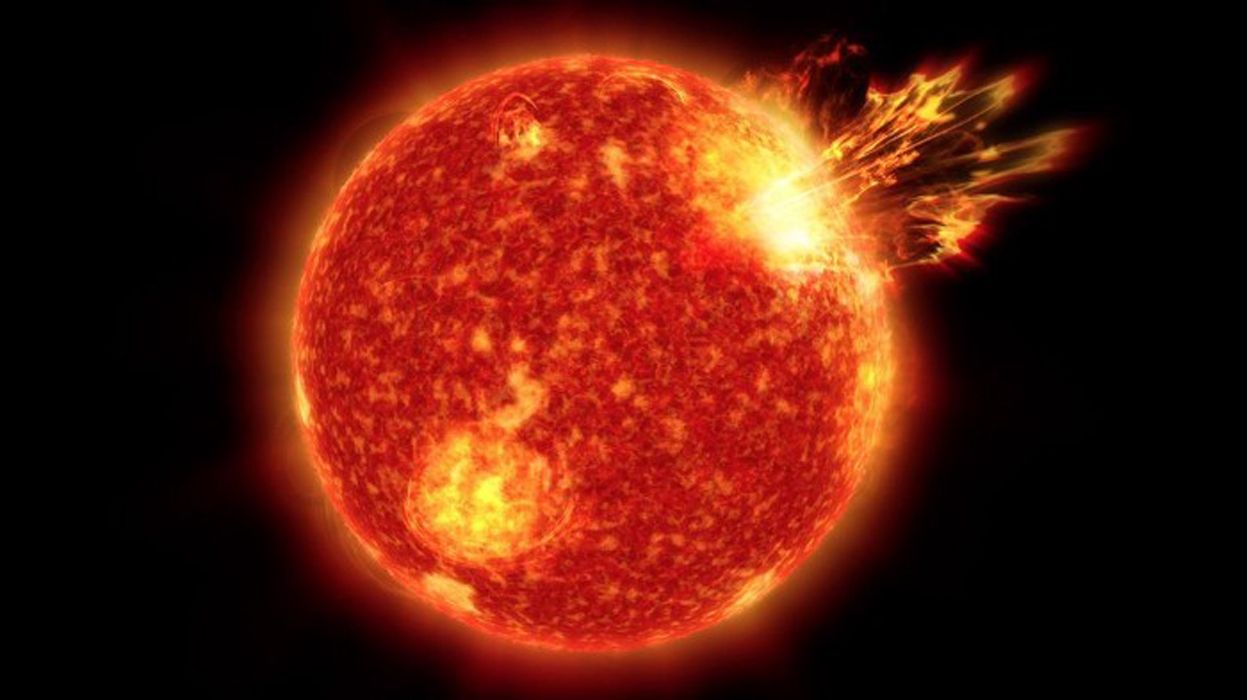Researchers examined, analyzed and modeled the young Sun-like star Kappa 1 Ceti to understand how our Sun may have shaped Earth and possibly helped in the development of life.

One of the benefits of being a planetary scientist is that we can usually touch samples of what we want to analyze. For example, if we want to understand the Earth’s past, we only have to analyze the rocks, or sometimes the gassy inclusions in the crystals in the rocks. But we can do that, and we can and have built a story of Earth.
This technique is not one that astrophysicists can use to analyze the past of stars or galaxies. The distances are usually huge, so we’re seeing objects in the distant past, and we cannot sample their materials. We can, however, use the vast number of similar objects at various stages in their life cycles to understand how they have changed over time. And that is what new research published in The Astrophysical Journal has done when it comes to the past of our own Sun.
The star involved in this particular study is Kappa 1 Ceti, a solar analogue with a similar mass and surface temperature to our Sun, located about 30 light-years away. It’s only 600–750 million years old, so it is relatively close and relatively young. In fact, Kappa 1 Ceti is about the same age our Sun was when life began to develop here on Earth, and that makes this particular solar analogue very interesting, according to second author and SETI Institute heliophysicist Meng Jin.
Young stars are known for their bursts of energy, released in the form of stellar winds. These winds are made up of plasma, which is a superhot gas, and that plasma gets accelerated away from the star using the magnetic fields. We see these coronal eruptions still on our own Sun but with far less frequency than a much younger star experiences. But stellar winds are constant, and as Jin explains: Stellar wind is continuously flowing out from a star toward its nearby planets, influencing those planets’ environments.
And the winds from younger stars are hotter, stronger, and (probably) faster. All of this raw power means that these winds can hit orbiting young planets and affect how life develops. The magnetic fields of the planets can be compressed. The development of organic material can be catalyzed. First author Vladimir Airapetian from NASA’s Goddard Space Flight Center explains: It’s my dream to find a rocky exoplanet in the stage that our planet was in more than 4 billion years ago, being shaped by its young, active star and nearly ready to host life. Understanding what our Sun was like just as life was beginning to develop on Earth will help us to refine our search for stars with exoplanets that may eventually host life.
Although we cannot actually measure the stellar winds from stars other than our own sun, at least not accurately from these massive distances, the team of researchers relied on computer models to fill in the gaps. This new model for Kappa 1 Ceti was based on the Alfvén Wave Solar Model developed by the University of Michigan. As Jin notes: It’s capable of modeling our star’s winds and corona with high fidelity. And it’s a model we can use on other stars, too, to predict their stellar wind and thereby investigate habitability. That’s what we did here.
Going forward, the team hopes to map other Sun-like stars at different stages of their lives to build a complete timeline of our Sun’s changes. Next up, EK Dra, which is 111 light-years away and a mere baby at 100 million years old. We look forward to their future analysis and how it can help us understand just what might bring a planet to life.
More Information
NASA press release
“One Year in the Life of Young Suns: Data-constrained Corona-wind Model of κ1 Ceti,” Vladimir S. Airapetian et al., 2021 August 3, The Astrophysical Journal
This article originally appeared on Medium.





